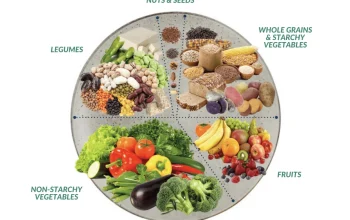When you think about managing chronic kidney disease (CKD), your mind probably goes to dialysis, medications, and diet restrictions. Sodium, potassium, phosphorus—you know the drill. But what if I told you one of the most powerful tools in your management arsenal is a bustling, microscopic universe living inside your gut?
It’s true. The trillions of bacteria, fungi, and other microbes that call your digestive system home—collectively known as the gut microbiome—are emerging as a critical player in kidney health. This isn’t just a side note; it’s a fundamental shift in how we understand the disease. Let’s dive in.
The Gut-Kidney Axis: A Two-Way Street of Communication
Think of your body as a sophisticated city. Your gut and your kidneys are two major districts, constantly chatting through a dedicated hotline—the gut-kidney axis. They send messages via hormones, immune signals, and, most importantly for our story, metabolic byproducts.
In a healthy body, this communication is smooth. Good gut bacteria help digest fiber from your food, producing beneficial short-chain fatty acids (SCFAs) like butyrate. These SCFAs are like little peacekeepers—they reduce inflammation, strengthen the gut lining, and support overall health.
But here’s the deal: with CKD, this delicate balance gets thrown into chaos. The kidneys, struggling to filter waste, allow toxins like urea to build up in the blood. A lot of this urea finds its way into the gut. And for some bacteria, urea is a feast.
When the Balance Tips: Dysbiosis and Its Consequences
The problem is, the bacteria that love to eat urea aren’t always the friendly ones. As they thrive, they can crowd out the beneficial, peacekeeping bacteria. This imbalance is called dysbiosis.
Dysbiosis is a real game-changer in CKD progression. It’s like the bad neighbors have taken over the block. This leads to a couple of major issues:
- A Leaky Gut: The unhealthy gut lining becomes more permeable—”leaky.” Think of it as a fence with broken slats. This allows harmful bacterial fragments and toxins to slip into the bloodstream, triggering a state of chronic, body-wide inflammation. And inflammation is pure fuel for kidney damage.
- The Uremic Toxin Factory: Those urea-loving bacteria don’t just produce harmless waste. They churn out a host of protein-bound uremic toxins (PBUTs). The most notorious of these is indoxyl sulfate and p-cresyl sulfate. Well, these toxins are particularly nasty because they’re tough for compromised kidneys to remove. They accumulate, further damaging kidney tissue and creating a vicious, self-perpetuating cycle.
So, What Can We Do About It? Targeting the Gut for Kidney Health
This might sound bleak, but honestly, it’s incredibly hopeful. By focusing on the gut, we open up a whole new frontier for managing CKD. It’s about working with your body’s ecosystem. Here are the key strategies gaining traction.
1. Prebiotics: Feeding the Good Guys
Prebiotics aren’t alive; they’re the food that your beneficial gut bacteria crave. They’re primarily types of dietary fiber. By increasing your intake of prebiotics (within your kidney-friendly diet plan, of course), you’re essentially sending reinforcements to the good bacteria.
Kidney-Friendly Prebiotic Sources:
- Garlic and onions (used for flavor, not in huge quantities)
- Asparagus
- Oats
- Underripe bananas (these have more resistant starch)
2. Probiotics: Adding Reinforcements
Probiotics are the live, beneficial bacteria themselves, found in fermented foods and supplements. Introducing them is like sending in a specialized task force to help restore order. Research suggests certain probiotic strains can help lower those uremic toxin levels and reduce inflammation markers.
Kidney-Friendly Probiotic Sources:
- Plain yogurt (watch for potassium and phosphorus additives!)
- Kefir
- Some fermented vegetables like sauerkraut (again, portion control due to sodium)
It’s crucial to talk to your doctor or renal dietitian before starting any new supplement, including a high-dose probiotic. They can help you navigate what’s safe and effective for your specific situation.
3. Synbiotics: The Power Combo
This is exactly what it sounds like—a synergistic combination of a prebiotic and a probiotic. The idea is to both introduce the new, helpful bacteria and give them the specific food they need to colonize and thrive. It’s a one-two punch for gut health.
The Future is Fecal? Emerging Frontiers in Treatment
The science is moving fast, and some of it might sound, well, a bit out there. Fecal microbiota transplantation (FMT)—essentially transferring a healthy person’s gut microbiome to a patient—is being seriously studied for CKD. It’s like a total ecosystem reset. While still largely experimental for kidney disease, it highlights just how central scientists believe the microbiome is.
Another exciting area is the development of “bacterial binders.” These are medications designed to soak up the harmful uremic toxins right in the gut, before they even get into your bloodstream. It’s a clever way to intercept the problem at its source.
A Quick Glance at the Gut-Kidney Strategy
| Approach | What It Is | Kidney-Friendly Example |
| Prebiotics | Food for beneficial gut bacteria | Adding garlic to your cooking |
| Probiotics | Live, beneficial bacteria | A small serving of plain yogurt |
| Dietary Fiber | General food for a healthy gut environment | Incorporating oats into your breakfast |
Managing a chronic condition is a marathon, not a sprint. It’s easy to get bogged down in numbers and restrictions. But this new understanding of the gut microbiome offers something different—a sense of empowerment. It reminds us that our bodies are interconnected systems, and that supporting one part, even a part as hidden as our gut, can create ripple effects of healing elsewhere.
The food choices you make do more than just hit a nutritional target; they shape an entire internal world. And that world, it turns out, is whispering—or sometimes shouting—to your kidneys. The future of kidney care isn’t just about filtering blood; it’s about cultivating a garden within.




